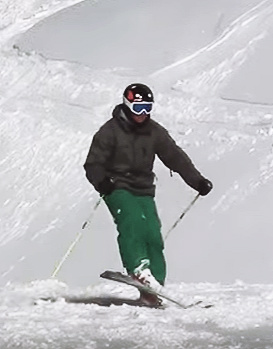Part II – What To Do On Your First Day Back On Skis
02 Nov 2016, Posted by in Latest News
Your primary and probably only focus on your first day back on skis should be on establishing DYNAMIC balance. Being able to stay upright while you zig zag down the hill is not fall under the hashtag “#winning.” It would probably be more appropriate under the “#surviving.” Your goal should be able to establish balance on your skis without relying on your equipment. Most of the time we balance on surfaces that are stable and not moving. We’ve been doing it since we were toddlers and have become really good at it. Since skiing involves a surface that isn’t always smooth and stable, it requires more that the habitual contraction of muscles that we use to stay upright while walking or running. The added movement will take our body out of balance in multiple planes and therefore we are constantly in need of making adjustments and corrections to not fall over but also exert control over our skis. The better we get at it, the smaller our movements become, we transition from gross motor control movements to finer ones. As we move to greater dominance with our fine motor control, our body also adopts a more athletic posture, this allows the core to remain engaged and serve as anchor so that joints can be flexed and limbs moved to varying degrees without disrupting the rest the body.
A great indoor simulator is to try and balance on a physioball, start on your knees before progressing to balance on your feet. When you are first starting to do this, keep a chair close by or position the ball near a wall or something you can use to help catch your balance and not fall off the ball. It might seem hopeless at first, but with practice you can balance on the physioball on your knees or feet without holding on to something. Once you can balance for 10 seconds without falling, the game becomes about how long can you go before you lose it (your balance that is, not your marbles).
The last post discussed achieving balance in the sagittal plane or along the length of the skis (in case you missed it click here). In this post we are going to talk about establishing balance in the frontal plane or over the outside or inside ski. In skiing your outside ski takes center stage in a turn. Our goal is to establish balance over the outside ski, where this becomes challenging for a lot of skiers is switching from one outside ski to the other when you go from right to left, left to right and so on. Here are a couple of exercises that are ideal for helping you balance over the outside ski on your first back on snow.
Stepping or step turns, is where you pick up one foot then the other repeatedly throughout the turn. You want to achieve stepping movements that are quick, soft, deliberate, this will signify that you have control over your movements. If you find that you thump down on your inside ski during the whole turn or even just part of a turn or you tend to stay on the inside ski a little longer before stepping onto the outside ski or you are unable to step throughout the duration of the turn, then you’ve still got some work to do coordinating your movements to keep you balanced over the outside ski.
Stork turns are another exercise that is great for helping to achieve balance over the outside ski, in this exercise you will lift the tail of the inside ski up off the snow from the start to finish of turn and then switch to the other ski when you change direction. You want to be able to do this maneuver without setting the tail down until you change directions. When you accomplish this, you can try and lift the tail of the ski higher. The next phase of difficulty is to lift the entire ski off the ground. You are successful in this exercise when you can execute control over your speed, that is you have the ability to slow your turn down or speed it up at will. Riding the edge of the ski around a turn doesn’t exemplify an ability to balance over the outside ski because you are relying on the skis edge-grip with snow to help keep you upright and achieve a direction change.

